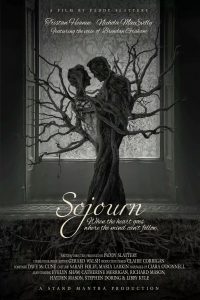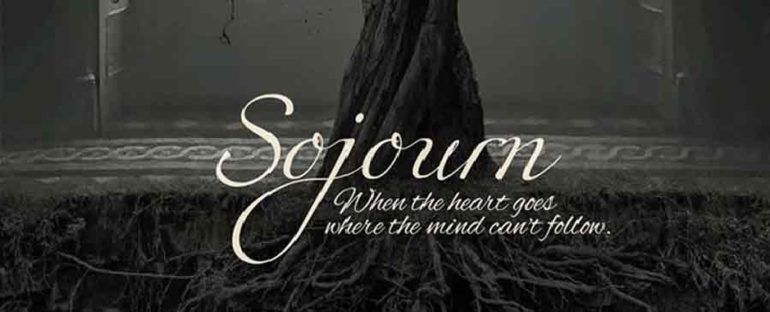A film by Paddy Slattery
Described by IFTN’s Paul Byrne as Offaly’s answer to Orson Welles in an interview last year, 34 year old Paddy Slattery lives up to this moniker with a critically acclaimed and award-winning directorial, producing and writing repertoire of short films including The Moment (2010), Runner (2012), Skunky Dog (2014) and Today (2015).
So far, Slattery’s work dismisses conservative and formulaic storylines and delivery; his films are at turns imaginative, surreal, disturbing, moving and violent. Even taking into account his talent and reputation, the undertaking of a film such as this is still a very brave move. In fact, the current work is a pared down version of what had initially been envisaged – a highly ambitious community arts project about a group of Tullamore-based knitters who create a coat for young man called Aedh. Due to a lack of funding, the concept had to be re-thought and re-designed resulting in some creative compromises to get to the film that we see today. Despite the compromise, Sojourn is an extremely accomplished and daring piece of work.
 Without traditional narrative and dialogue, Sojourn is an almost abstract work and isn’t easy to distill into a few lines. The 41 minute film consists of a number of episodes split into two volumes. The protagonist Aedh (Tristan Heanue), is inspired by a character who crops up in the work of W.B. Yeats and whom the poet felt he related strongly to. This young man is the master of a sprawling mansion (the location is beautiful Temple House, Sligo – where Jimmy’s Hall and Calvary have previously filmed). He is in love with the mischievous Aislinn (Nichola MacEvilly) but he is no match for the frivolity and desire of this raven haired beauty and at the end of the first volume, their love sours and he finds himself alone. Volume two contrasts pointedly with the carefree and playful atmosphere of the previous episodes. A feral and frightened Aedh trudges across a desolate wilderness. He is haunted by visions of an icy faced Aislinn and other women, reminiscent of Macbeth’s witches, who follow him through the mist. Slattery creates a truly nightmarish atmosphere with a surreal scene where Aedh, clad in a suit of armour, stands in the middle of a field staring into a mirror and is then pursued by a pair of demented beast-like men.
Without traditional narrative and dialogue, Sojourn is an almost abstract work and isn’t easy to distill into a few lines. The 41 minute film consists of a number of episodes split into two volumes. The protagonist Aedh (Tristan Heanue), is inspired by a character who crops up in the work of W.B. Yeats and whom the poet felt he related strongly to. This young man is the master of a sprawling mansion (the location is beautiful Temple House, Sligo – where Jimmy’s Hall and Calvary have previously filmed). He is in love with the mischievous Aislinn (Nichola MacEvilly) but he is no match for the frivolity and desire of this raven haired beauty and at the end of the first volume, their love sours and he finds himself alone. Volume two contrasts pointedly with the carefree and playful atmosphere of the previous episodes. A feral and frightened Aedh trudges across a desolate wilderness. He is haunted by visions of an icy faced Aislinn and other women, reminiscent of Macbeth’s witches, who follow him through the mist. Slattery creates a truly nightmarish atmosphere with a surreal scene where Aedh, clad in a suit of armour, stands in the middle of a field staring into a mirror and is then pursued by a pair of demented beast-like men.
The lack of dialogue has no detrimental effect on the viewing experience of Sojourn. In fact, it forces the viewer to commit their senses to the visual and musical beauty of the film. David McCune’s originally composed core is enchanting and intense and proves a very successful mechanism for building tension throughout the film. The shrill notes of the soundtrack played while Aedh rows away from his malevolent pursuers adds palpable horror to this scene.
Director of Photography Gerard Walsh’s cinematography is stunning. At the start of the film the two lovers dancing are reflected in a wine glass, their reflection is then obliterated as the drink splashes into the glass. A recurring image of Aedh and Aislinn’s silhouettes in front of a magnificently decorated window never fails to impress. The cold blue hues in the second volume really conjure up the chill of the midlands landscape where Aedh, after losing his love, is banished. This is interrupted by momentary instances of dappled sunlight glinting to through the trees.
Actors Nichola MacEvilly and Tristan Heanue have taken on a brave task in Sojourn, playing non speaking parts. Acting in a film with no dialogue can be a daunting undertaking yet both actors do a stellar job in evoking atmosphere and engagement of the audience. Heanue, who recently directed the short film Today starring John Connors, sensitively portrays Aeadh’s spectrum of emotions right through the film particularly in the more despairing scenes in the second chapter of the film. Sojourn also features the convincingly threatening Hayden and Richard Mason as the savages, Stephen Doring, Libby Kyle, Evelyn Shaw and Catherine Merrigan.
Sojourn is a magical film, a meditation on love, grief, loneliness and despair and we are brought along this roller-coaster of emotions by the music, the imagery, the studied performances and by Slattery’s own original poetry which is sprinkled throughout the piece and narrated in the dulcet tones of songwriter Brendan Graham. The film begins with a playful tone which then plummets to depths of despair but comes out the other side with a delicate hope; the journey represented throughout by the changing form of a beautiful yellow rose.
Sojourn had its Irish premiere last Summer in Tullamore as part of a celebratory event for the 150th anniversary of Yeats birth, before screening at the Clones Film Festival and Offline Film Festival. It was recently shown for the second time by Underground Cinema in Dun Laoghaire. Internationally, it has been selected for screening NYC Independent Film Festival and Dada Saheb Phalke Film Festival, India’s only independent film festival, at the end of April. Any self-respecting festival programmer with an eye for beauty should find a slot on in their festival for Sojourn!

